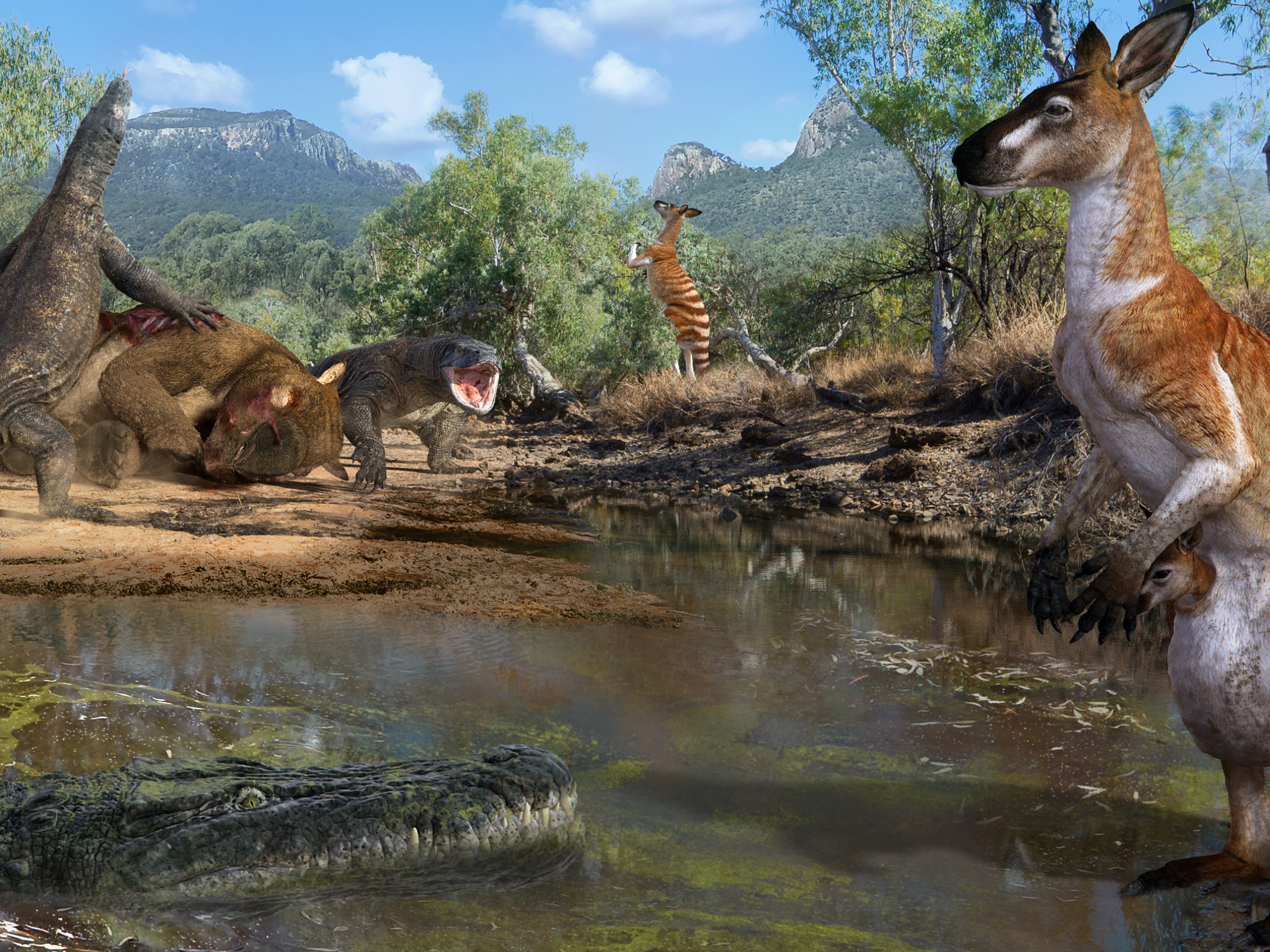World’s largest kangaroos, wombats, and marsupial lions once roamed Australia, fossils reveal
Pound-for-pound, the Thylacoleo carnifex had the strongest bite of any mammal – living or extinct

Your support helps us to tell the story
From reproductive rights to climate change to Big Tech, The Independent is on the ground when the story is developing. Whether it's investigating the financials of Elon Musk's pro-Trump PAC or producing our latest documentary, 'The A Word', which shines a light on the American women fighting for reproductive rights, we know how important it is to parse out the facts from the messaging.
At such a critical moment in US history, we need reporters on the ground. Your donation allows us to keep sending journalists to speak to both sides of the story.
The Independent is trusted by Americans across the entire political spectrum. And unlike many other quality news outlets, we choose not to lock Americans out of our reporting and analysis with paywalls. We believe quality journalism should be available to everyone, paid for by those who can afford it.
Your support makes all the difference.Palaeontologists have discovered the remains of what could be the largest kangaroo to have ever walked the earth: a massive marsupial which stood at seven meters tall and weighed around 274kg – approximately half as much as a grizzly bear but three-times as much as the average kangaroo.
Researchers from the Queensland Museum and the Australian Research Council also found fossil records of at least 12 other species of enormous animals – called megafauna – including five reptilian megapredator crocodiles which could grow to up to seven metres, and the world’s largest wombats.
A marsupial lion called "Thylacoleo" was also discovered by scientists. This is a carnivorous “pouch lion” which could weigh around 130kg. Pound-for-pound, the Thylacoleo carnifex had the strongest bite of any mammal – living or extinct.
The animals were discovered in an area near Mackay, located on Australia’s eastern coast, called South Walker Creek. It is the youngest megafauna site in Northern Australia, with the huge animals only going extinct approximately 40,000 years ago.
However, rather than humans driving the beasts to extinction, there was no evidence placing humans at the scene during the time period. Instead, “successive loss of water flow, intensified drying, increased burning and vegetation change” was the reason for the animals not existing today.
The findings, which were published in the journal Nature Communications, were conducted by Scott Hocknull, Richard Lewis, Lee Arnold, Tim Pietsch, Renaud Joannes-Boyau, Gilbert Price, Patrick Moss, Rachel Wood, Anthony Dosseto, Julien Louys, Jon Olley and Rochelle Lawrence.
This “40,000-year-old crime scene”, as described by Dr. Hocknull, challenges the theory that human hunting drove the elimination of the large animals.
“The megafauna at South Walker Creek were uniquely tropical, dominated by huge reptilian carnivores and mega-herbivores that went extinct… well after humans arrived onto mainland Australia,” Dr. Hocknull also said.
Researchers used the animals’ fossilised teeth to determine their age. Chemical elements including, uranium and thorium found in the fossils, placed the giant wombats approximately 25,000 years ago.
“No doubt humans would have hunted megafauna and had it for dinner. But these new results show that humans alone didn’t drive megafauna to extinction; climate and environmental change was also a big driver,” said Professor Dosetto from the University of Wollongong.
Some of these species are newly discovered, so are yet to receive formal descriptions or scientific names.
The fossils were originally discovered in 2008 over a systematic excavation that revealed other fossils, such as tiny fish scales and huge limb bones. It was found by the Barada Barna – otherwise called the Baranha, an aboriginal tribe of northern Queensland – during a cultural heritage clearance at the site.
The site is is currently operated by the mining, metals and petroleum company BHP Billiton Mitsui Coal.
“The Board of Directors from the Barada Barna Aboriginal Corporation are extremely excited that we have found the Megafauna within our traditional country,” a Barada Barna Aboriginal Corporation spokesperson for the Board of Directors said.
“The team that discovered these finds back in 2008 had no idea of how great a discovery it was. With the help of Queensland Museum we have discovered more and more animals from that time.”
Join our commenting forum
Join thought-provoking conversations, follow other Independent readers and see their replies
Comments